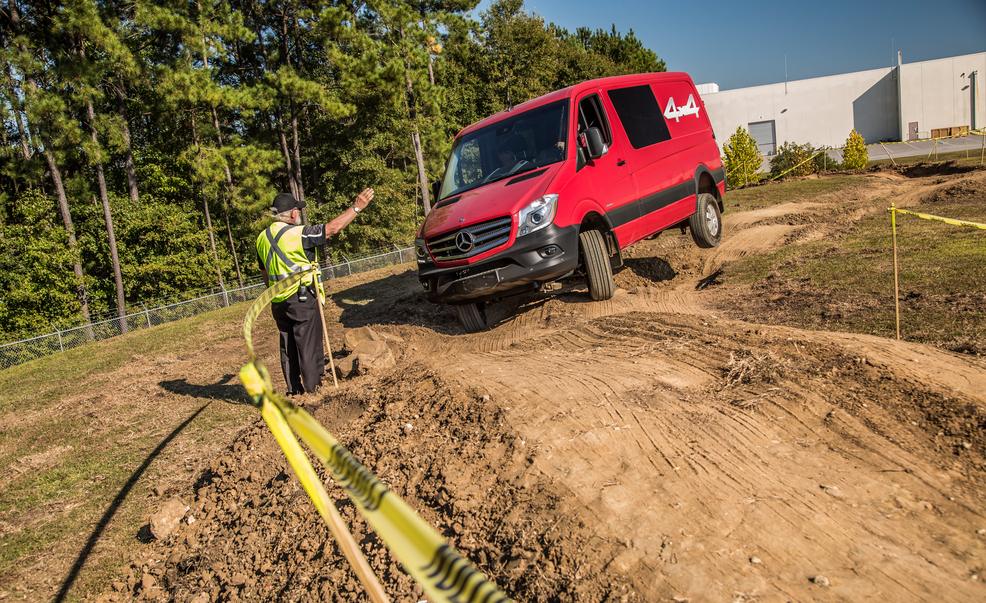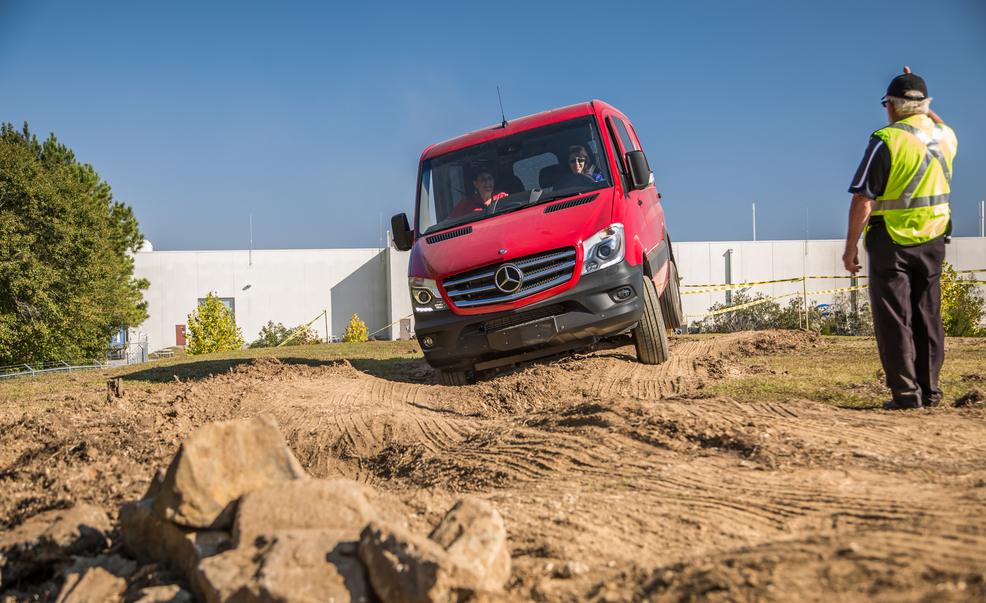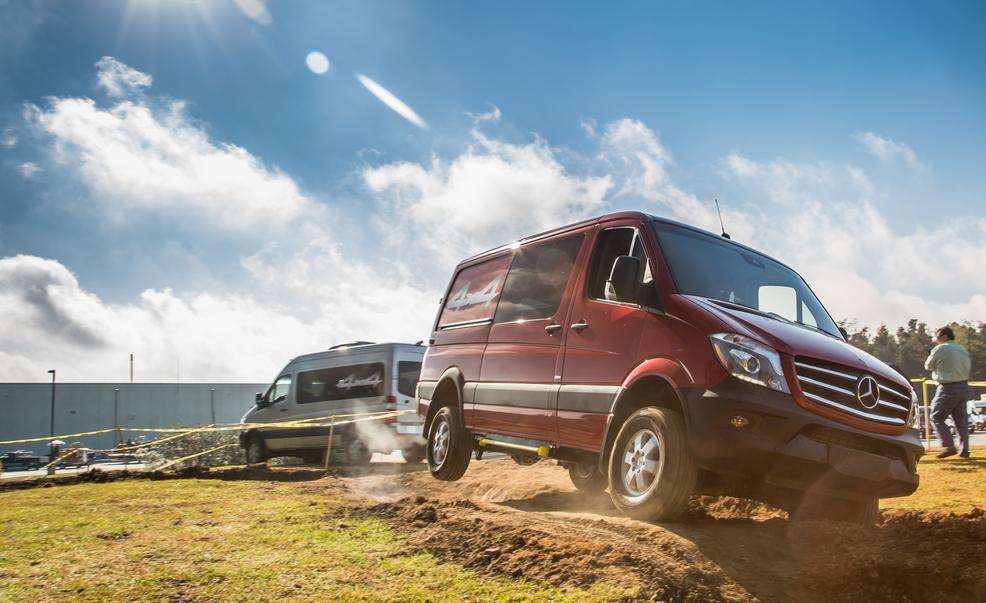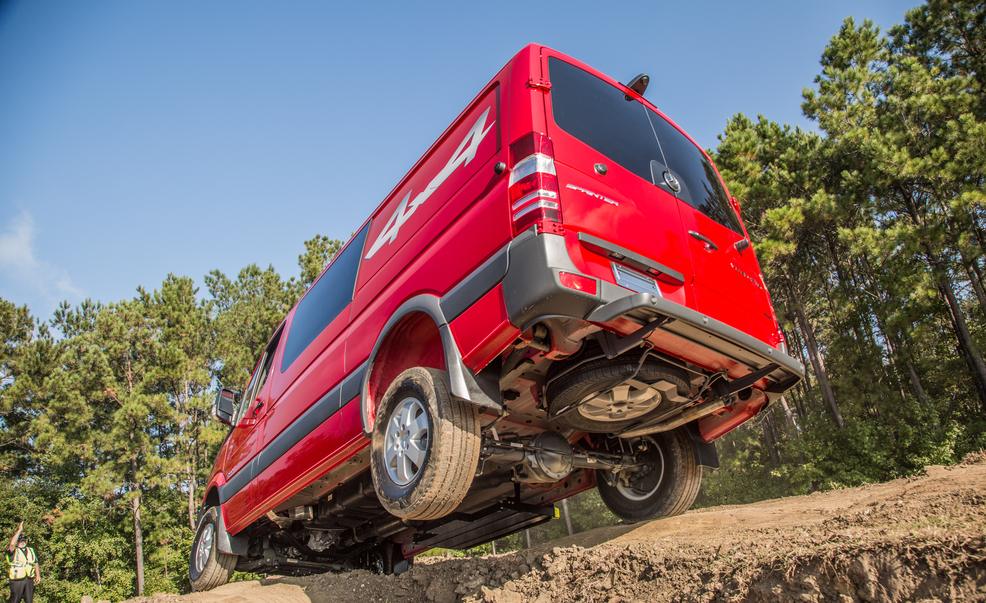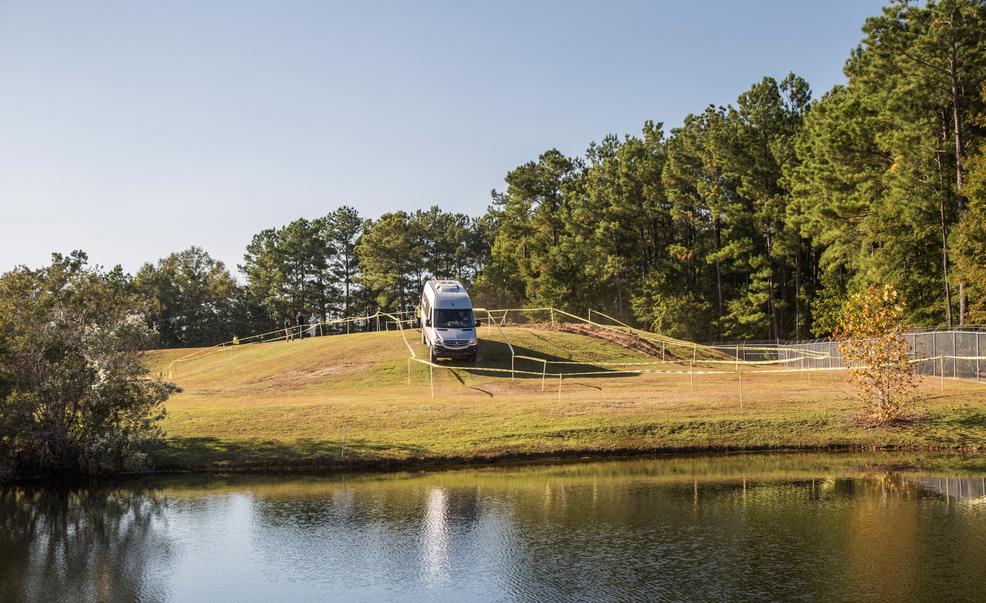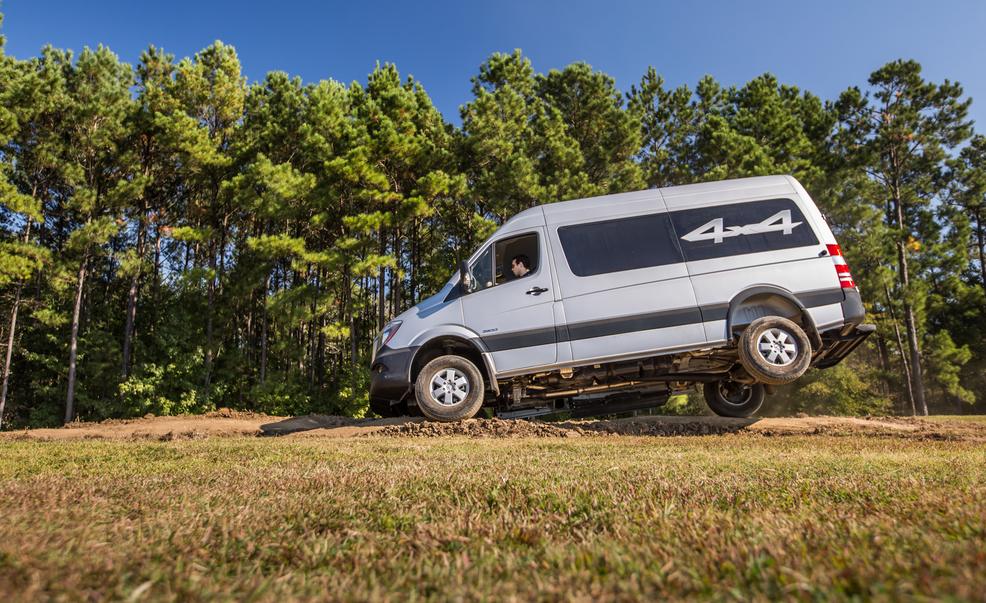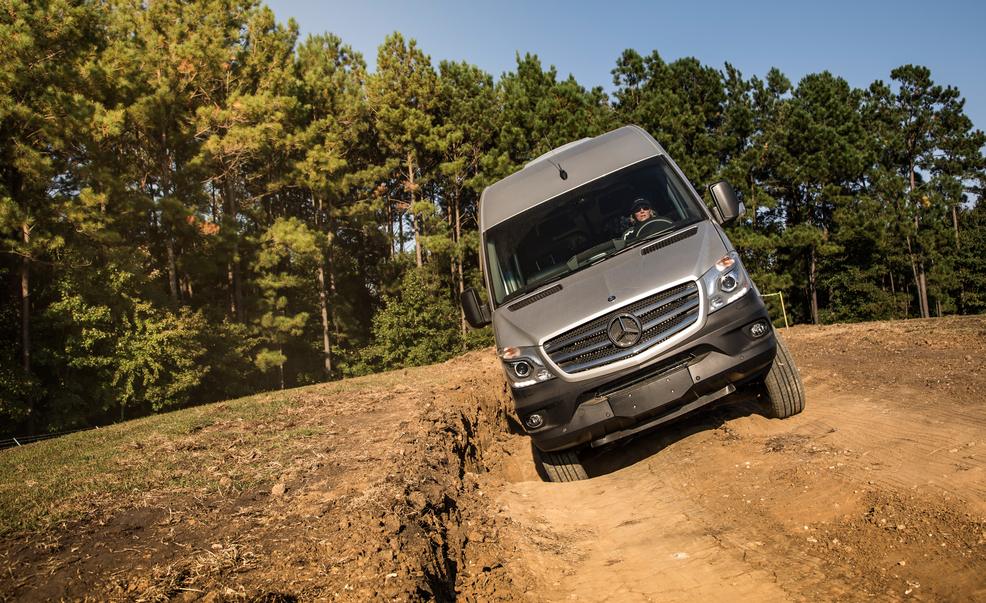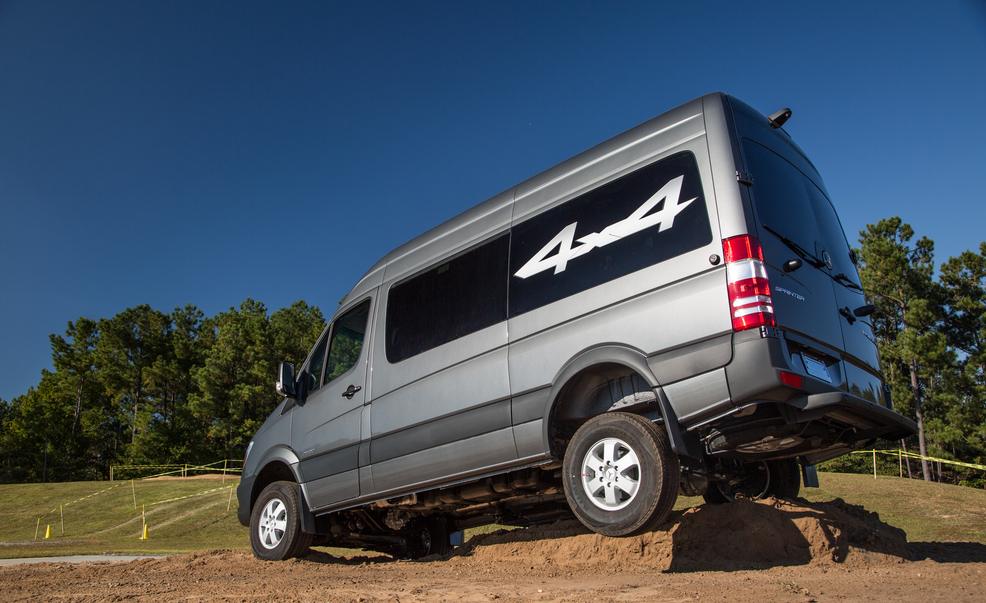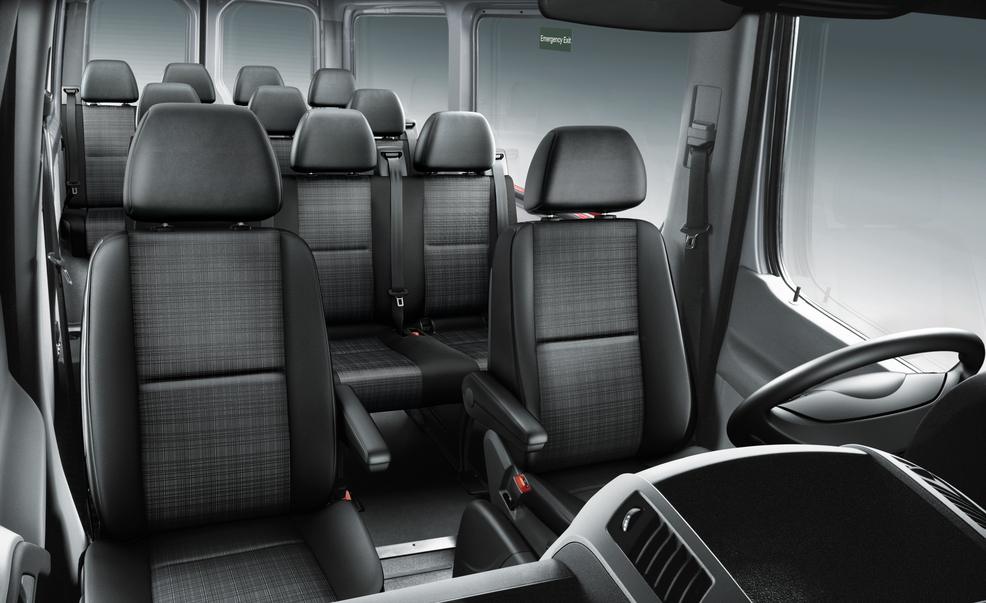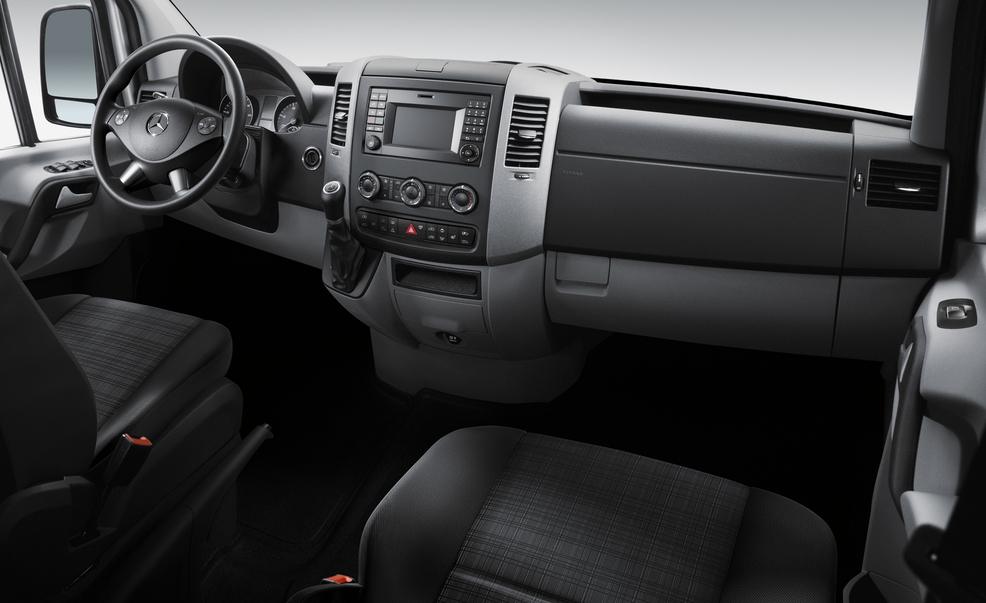Never before have we pondered a subconscious connection with the contents of an uncracked egg, but there’s a first time for everything. In this case, the Mercedes-Benz Sprinter 4×4 is the shell and we’re its quivery innards, practically foaming as the big van teeter-totters up and down a craggy off-road course outside of the Ladson, South Carolina, facility where U.S.-market Sprinters are assembled. Our squishy sensitivities aside, this is the ideal first encounter with the Sprinter’s newly available four-wheel-drive system, which has been offered on global models for some time but is only just reaching our shores for the 2015 model year.

2015 Mercedes-Benz Sprinter 4×4
WANNA GET HIGH?
For an extra $6500, any Sprinter body style (passenge

2015 Mercedes-Benz Sprinter 4×4
r, crew, cargo) in either wheelbase length (144.3 or 170.3 inches) can be equipped with four-wheel drive and a nifty “4×4” badge. (Add another $300 for a low-range transfer case with a 42-percent-lower crawl ratio.) To get four-wheel drive, buyers must also order the 188-hp V-6 turbo-diesel and five-speed automatic. The four-cylinder turbo-diesel/seven-speed automatic that joined the refreshed-for-2014 Sprinter lineup remains rear-drive-only.
A push of a button switches the van from a two-wheel-drive hauler into a four-wheel-drive off-roader that just happens to carry a massive volume of stuff. On Sprinters so equipped, a second button press activates low range. In either 4×4 mode, 35 percent of torque is routed to the front axle while the other 65 percent powers the rear. Unlike Mercedes-Benz’s 4MATIC all-wheel drive, the torque split isn’t variable, so it’s best to leave the Sprinter in two-wheel-drive mode on dry pavement unless you enjoy the sounds of binding driveline components.

2015 Mercedes-Benz Sprinter 4×4
UP, UP, AND AWAY—FROM PAVEMENT
Unfortunately, the preproduction Sprinter 4x4s weren’t registered for street use, but a brief trip on pavement confirmed that, with four-wheel drive switched off, the 4x4s drive more or less identically to their two-wheel-drive counterparts. On Benz’s mini Rubicon, however, a short-wheelbase, high-roof Sprinter 4×4 with low range proved to be a different animal.
To help the long van clear obstacles (even the short 144-inch wheelbase is a recipe for high-centering), every 4×4’s suspension is raised 4.3 inches in front and 3.1 inches in back. The articulation limitations of the Sprinter’s independent front and solid-axle rear suspension are overcome by Mercedes-Benz’s Electronic Traction System (ETS). Essentially a few lines of code added to the van’s electronic stability control, ETS brakes traction-challenged wheel or wheels, which sends torque through that axle’s differential to the opposite wheel. Thus, even with one or two wheels hanging high above ground, the Sprinter 4×4 scampered over obstacles with the alacrity of a seriously bloated Jeep Wrangler. To cap off the dirt theater, we never once experienced anything approaching palpable chassis twist, an impressive feat for a vehicle with such a large, hollow, tubelike structure.
Speaking of large, broadsided structures, they’re not ideal in heavy crosswinds. Benz has come up with a solution for that; the 2015 Sprinter 2500 models with any drive configuration get Crosswind Assist, yet another function of the stability control brain that detects strong gusts and applies the brake on the appropriate individual wheels to maintain a straight path. We rode for an exciting test during which a Benz engineer drove past a row of several-hundred-horsepower worth of swamp boats running at full tilt (pumping out a near-constant 90-mph gale) at roughly 50 mph—the system’s minimum speed threshold. This hurricane-grade blast didn’t put the thing on its door handles. The Sprinter’s body rocked heavily, certainly, but ultimately the van continued on its course.
Rocking and rolling in a Sprinter 4×4, whether it be through a tornado or climbing to a remote mountain trail, won’t be cheap—the least expensive 2015 Sprinter 4×4 starts at $44,475 in cargo form—but if you need to move a lot of people or cargo through inclement weather or into inhospitable environs, pickings are quite slim. Four-wheel-drive-converted Chevrolet Express and Nissan NV vans are smaller; the new Ford Transit and Ram ProMaster are two-wheel-drive-only (at least until Quigley or a competing converter steps up); and a Zeppelin is, well, it’s a zeppelin, meaning it ain’t terribly convenient and lacks a nationwide network of dealers that can service it. Clearly, the Sprinter 4×4 is pretty much your only choice.

2015 Mercedes-Benz Sprinter 4×4
Via: Car and Driver
